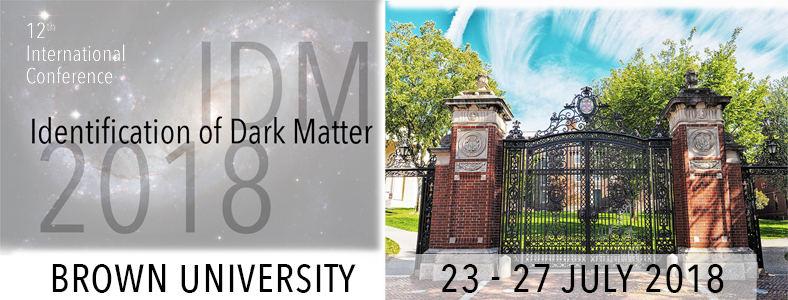Conveners
2.5 Direct Detection
- Philippe DiStefano
The XENON collaboration has completed a search for WIMP-nucleon Spin-Independent elastic scattering using a one tonne-year exposure of XENON1T detector. The XENON1T experiment has an electronic recoil background of ~0.2 events/(tonne-day-keVee), the lowest ever achieved in any dark matter search experiments. This talk will describe the background modeling performed in this WIMPs search analysis.
As noble liquid time projection chambers grow in size, their high voltage requirements increase, and detailed, reproducible studies of breakdown and electroluminescence are needed to inform their design. The Xenon Breakdown Apparatus (XeBrA) is a 5-liter cryogenic apparatus designed to study high voltage behavior in noble liquids located at Lawrence Berkeley National Laboratory. This talk will...
The LUX-ZEPLIN experiment will use a seven tonne dual-phase xenon TPC for the direct detection of WIMP dark matter. Backgrounds that can affect the experiment’s sensitivity must be well understood. Simulations are essential to estimate these and thus to develop effective strategies to mitigate them. They are also useful in assessing detector performance, and planning calibration and analysis...
The LZ (LUX-ZEPLIN) dark matter search experiment is a liquid xenon time projection chamber (TPC) with a 7 tonne active xenon volume currently under construction. Four wire mesh grids of 1.5 m diameter establish electric fields in the detector to drift ionization electrons across the volume and extract them from the liquid surface. This presentation will discuss the design, construction,...
We describe two new measurements from the PIXeY two-phase xenon time projection chamber. The extraction efficiency of quasi-free electrons from the xenon surface was measured as the field in the gas above the liquid surface was varied from 4.5 to 13.1 kV / cm. The extraction efficiency was seen to increase even at the highest fields, suggesting that the charge signals in two-phase xenon...
The axion was first proposed as a solution to the strong CP problem, and also serves as a well-motivated dark matter candidate. HAYSTAC is a dark matter axion experiment designed to detect cosmic axions through their conversion into photons using a high $Q$ microwave cavity detector. The flexibility of HAYSTAC's platform allows for the development of new microwave cavity and amplifier concepts...
